#September- Working for Adriatic Marine
Text
September- Working for Adriatic Marine
I returned from Mexico late on August 30 and thank god I had work waiting for me. I had to rush around to get caught up and ready to leave for work on the 1st of September. That only gave me 1 day to get everything done that I could.
Most important was to get a doctors appointment. Urgent need for that. Since I am a merchant marine, I must apply for a license to work from the United States…
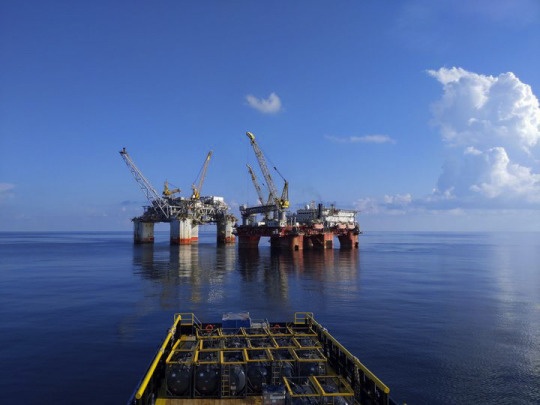
View On WordPress
#Adriatic Marine#Merchant Marine#photo of Blind Faith#photo of Blind Faith with Safe Concordia alongside#photo of Safe Concordia#Red Stag#September- Working for Adriatic Marine#USCG physical#working as a DPO#working as a mariner#working at sea
0 notes
Text
Fwd: Course: Piran_Slovenia.DolphinResearch.Jul-Sep
Begin forwarded message: > From: [email protected] > Subject: Course: Piran_Slovenia.DolphinResearch.Jul-Sep > Date: 1 June 2022 at 05:41:41 BST > To: [email protected] > > > > Dear colleagues, > > Morigenos - Slovenian Marine Mammal Society's organising Dolphin > Research Courses in Piran, Slovenia, between July and September 2022, where > interested individuals can participate in field research and help study > dolphins in their natural environment. Morigenos is a non-profit NGO > that aims to combine scientific research, education, public awareness > and capacity building, to achieve effective conservation of marine > mammals and the marine environment. Since 2002, Morigenos has been > conducting long-term research on the ecology, behaviour and conservation > of a resident population of common bottlenose dolphin (Tursiops > truncatus)inhabiting the wider area of the Gulf of Trieste in the northern > Adriatic Sea. The resulting scientific publications arising from this work > can be found here:https://ift.tt/V6EY4Dh > > The courses, organised annually since 2003, are open to both students > and non-students, regardless of previous experience. During the 10-day > course, participants will gain theoretical and practical experience > in marine mammal research methodology, including boat- and land-based > surveying, focal follows, behavioural observations, photo-identification, > abundance estimation and studies of social structure. Training is > provided both in the field and in the form of lectures. Accommodation > is provided at Morigenos research base in a beautiful medieval town of > Piran (Slovenia, EU), on the Adriatic Sea coast. Daily household duties > are shared among participants and researchers. The course fee, which > helps cover the fieldwork expenses and allows this research programme > to continue, is €549 for students and €793 for non-students. The > fee includes accommodation, food, fieldwork and training. There is no > selection. Applications are treated on a "first-come, first served" basis. > > WHERE: > Piran, Slovenia > WHEN: July-September 2022 > DURATION: 10 days > PRICE: students 549 > EUR, non-students 793 > EUR > (includes accommodation, food, fieldwork and training) > > More information, inquiries and registration at: > https://ift.tt/xCa3U0v > > +386 31 77 10 77 > > Best > wishes, > Nik Lupše > > > Morigenos - Slovenian Marine Mammal Society > Kidricevo nabrezje 4 > 6330 Piran > Slovenia > www.morigenos.org > https://ift.tt/MzlFt3v > twitter.com/Morigenos_org > > > Nik Lupse >
via IFTTT
0 notes
Note
Please drop some jellyfish facts!!! And what you're favorite species is!! (different anon from the ratatouille anon!)
You are 100% gonna regret asking me this question but it's too late, now everyone has to suffer through this ridiculously long post about jellyfish.
Okay so this one isn't my favorite species of jellyfish but it is the one I know the most about: the Cotylorhiza tuberculata AKA the egg jelly/Mediterranean jellyfish. They look like this


And as I'm sure you can guess, they're typically found in the Mediterranean BUT that's not all!!! They also populate the Aegean and Adriatic seas around mid-September/October. Despite how these pictures make them look they're actually pretty small, most of them only reach like a foot (around 40cm) across when they reach maturity which is pretty neat. Teeny tiny jelly babies. Their sting is apparently very mild/insignificant and most people stung by these guys have reported it feeling like a static/carpet shock at most, and absolutely nothing at least. Many "sting victims" only find out they've been stung once the area starts to get red, irritated, numb, and/or itchy. Their biggest predators are humans, and thanks to the summer vacation/holiday season many officials end up removing thousands of them from the ocean so that tourists won't be afraid/uncomfortable at commercial beaches which is a CRIME if you ask me.
Next on my list is the Stomolophus meleagris AKA the cannonball/cabbage head jelly and they look like this.. (personally I think they should be named eggshell jellyfish because that's what they look like but I mean cannonball is fine too I guess)

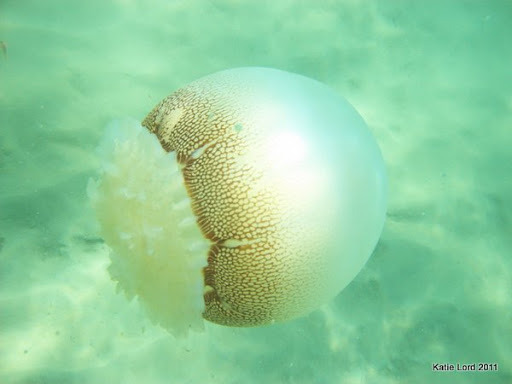
Apparently you can eat these guys, which both disgusts and saddens me simultaneously.. however I know some people are into eating weird delicacies so if you were wondering where to try them, you can find them on the Southeast coast of the United States. They're a coastal jelly which means they like shallow waters, and unfortunately they're one of the most common jellyfish you'll see washed up on the beach(boo!). Much like stingrays, it's not common for them to sting people but if and when they do, they have a special venom that can cause cardiac issues in both animals and humans. Main predators are a few different species of crab that I never learned the names of.
Another noteable mention before I reach my favorite species is the Lampocteis cruentiventer AKA the Bloodybelly Comb jellyfish that, surprise surprise, is red and spiny like this
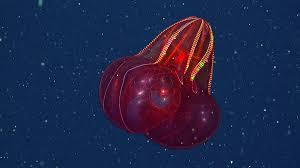
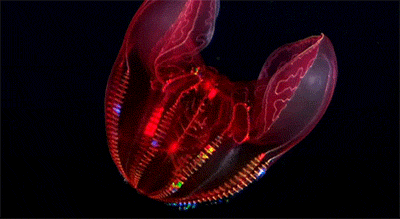
They are bioluminescent which means they glow in the dark (not exactly but we aren't gonna get into that right now). The spines or "hairs" they have that give them their comb classification actually move like thousands of tiny legs! They use these to move through the water (at a rate that is supposed to be fast for a jellyfish, but it's actually really slow if you are able to see them moving about. I was very disappointed by this when I looked up videos to see them zooming only to watch one putter around like a kid on a practice bike). Fun fact! In the deep water where they are normally located, you actually can't see them despite their glow. This is because creatures that are red actually appear black in dark water, so scientists aren't even sure what they eat and if they have any predators at all, because we simply can't see them. They were discovered off the coast of San Diego California not too long ago so scientists also aren't sure of all the places they populate because, again, we can't see them.
Last but NEVER least, we have my absolute favorite species of jelly which is the Narcomedusae (they don't have a common name because they aren't incredibly popular jellies but I call them Medusas) and they look like this!!
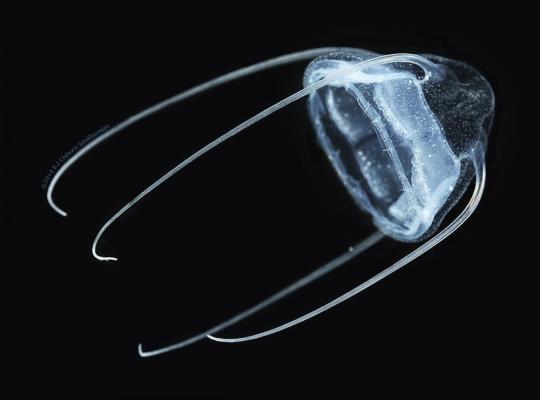
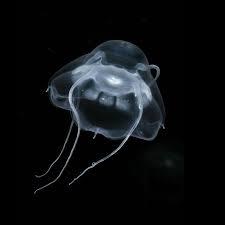
Narcomedusae is actually the general species name, and there are 64 different subspecies of medusas in the wild(that we know of). I would look them up and list them but it's late and that's a lot of work. If you really want a complete list let me know and I will reblog this with one later! Anyways medusas are ambush predators, and they're really, really good at what they do thanks to their two upper tentacles that they stick in front of them while they move through the water. They live in the Mediterranean area but a few different species have been found off the coasts of Russia and China(idk which specific regions I am so sorry). None of the 64 different types of medusas have a polyp stage, which is weird because most jellies have one. For anyone wondering what a polyp stage is, most jellyfish(and marine plants/stationary creatures) start off as teeny tiny little tentacle things (think of what a sea anemone looks like) that stick to rocks. They use their tentacles to eat plankton and other floating matter before(in the jellyfish's case) they detach from whatever coral/rock they were stuck on and start growing into tiny baby jellies. Medusas are generally deep sea jellyfish so we don't really know too much about what they eat and what their predators are, but considering the fact that they are all on the pale white-blue color spectrum, it's not wild to assume that they do have predators of some sort. Anyways I like them because, as ambush predators, they can actually zoom around in the water... Which gives me an incredible amount of serotonin. They also kind of look like Darth Vader's helmet and that is amazing, I love it very much! Not to mention Narcomedusae has Medusa in it and nothing could be better than a jellyfish that is unofficially named after THE Gorgon goddess of my dreams okay
#personale#charlize#bambi lesbian posts#bambi lesbian asks#anon#jellyfish#you asked and so you shall receive
73 notes
·
View notes
Text
VOLUNTEER AND INTERN RECRUITMENT FOR THE MONTENEGRO DOLPHIN RESEARCH (SOUTH ADRIATIC SEA)
The Montenegro Dolphin Research is a scientific project run by DMAD -
Marine Mammals Research Association. Our study is the first and only long
term research study of marine mammals in Montenegrin coastal waters, with
recent surveys covering the northern coastline of Albania.
We aim to address questions about marine mammal abundance, distribution and
behaviour, define critical habitats and investigate the impact of major
threats, ranging from tourism to seismic practices.
Our wider attention focuses on the promotion and implementation of
awareness initiatives targeted at the local community, particularly youth
and women.
More details on the project can be found here:
http://www.dmad.org.tr/montenegro-dolphin-research
WHO WE ARE LOOKING FOR
We offer several volunteering and internship positions: this is a valuable
opportunity for graduates, that wish to gain experience in the marine
mammal research field, and undergraduates, that would like to obtain
internship academic credits.
It could be used to develop a scientific project for BSc and MSc thesis.
However, we are also open to accept applications from anyone whose passion
for marine mammals is strong and sincere.
Opportunities are available *from now until September 2020*. The minimum
duration of the placements is 2 MONTHS, with possible exceptions for
skilled candidates.
REQUIREMENTS
-True interest for marine conservation, self-motivation, maturity and
ability to work responsibly;
-Ability to cohabit in a dynamic and multicultural environment;
-Respect for the organisation's rules and willingness to follow standards
and procedures;
-Proven experience of working effectively as part of a team;
-Fluent English (both spoken and written) and good communication skills;
-Willingness to learn new software applications.
-Background in marine biology and previous fieldwork experience are an
advantage.
FIELD WORK AND RESPONSIBILITIES
-Performing land-based surveys at least three times a week, including
sunrise and sunset hours;
-Performing boat-based surveys once a fortnight (occasionally more if
possible).
-Collecting dolphins sighting and behavioural data, as well as
environmental and anthropogenic data;
-Operating theodolite and managing its software Pythagoras;
-Data entry and analysis;
-Cataloguing and matching individuals of target species for photo-ID
studies via Discovery software;
-Raising stakeholder awareness through conservation actions.
-Promoting citizen-science activities
TRAINING
The Montenegro Dolphin Research team provides lectures and field work
training as well as constant mentoring.
You will be given the chance to learn the most popular methodologies used
in marine mammal research including:
-GIS mapping
-Theodolite operation and Pythagoras software;
-Photo-identification;
-Discovery, Darwin and Logger 2010 software;
-Systematic data collection and data analysis;
-Visual and acoustic behaviour of marine mammals
-Scientific manuscript and technical report writing skills
PROJECT PARTICIPATION FEE
The positions require a contribution fee of 700 Euros/ month which fully
goes to support the project and the participation fee includes:
-Accommodation and expenses
-Transportation between the project sites within and between Montenegro and
Albania
-Training and lectures
-Scientific support
-Field work
-Use of the equipment
Applicants are responsible for their transportation to/from Montenegro,
meals, insurance (all participants should have health and/or travel
insurance) and personal expenses.
HOW TO APPLY
Email your CV and cover letter to *[email protected] <[email protected]>* (Tim
Awbery) and *[email protected] <[email protected]>*, explaining why you are a
suitable asset for our team and which goals you hope to achieve with us!
Please mention the PERIOD OF INTEREST AND DURATION OF AVAILABILITY!
If you wish to have more info about our internships and work please take a
look at some of our web pages and social media:
Our research: http://www.dmad.org.tr/our-projects
Our internships: http://www.dmad.org.tr/our-internships
Our publications: http://www.dmad.org.tr/our-publications
<http://www.dmad.org.tr/our-internships>
Instagram: https://www.instagram.com/marinemammalsresearch/
Facebook: https://www.facebook.com/DMADforNature/
0 notes
Video
THE FICTION IS TAKEN FOR THUTH BECAUSE IT IS NEEDED
"The analyst of public opinion must begin then, by recognizing the triangular relationship between the scene of action, the human picture of that scene, and the human response to that picture working itself out upon the scene of action.
....At breakfast on the morning of September 29, 1919, some of the Senators read a news dispatch in the Washington Post about the landing of American marines on the Dalmatian coast. The newspaper said:
FACTS NOW ESTABLISHED
"The following important facts appear already established. The orders to Rear Admiral Andrews commanding the American naval forces in the Adriatic, came from the British Admiralty via the War Council and Rear Admiral Knapps in London. The approval or disapproval of the American Navy Department was not asked....
WITHOUT DANIELS' KNOWLEDGE
"Mr. Daniels was admittedly placed in a peculiar position when cables reached here stating that the forces over which he is presumed to have exclusive control were carrying on what amounted to naval warfare without his knowledge. It was fully realized that the British Admiralty might desire to issue orders to Rear Admiral Andrews to act on behalf of Great Britain and her Allies, because the situation required sacrifice on the part of some nation if D'Annunzio's followers were to be held in check.
"It was further realized that under the new league of nations plan foreigners would be in a position to direct American Naval forces in emergencies with or without the consent of the American Navy Department...." etc. (Italics mine).
The first Senator to comment is Mr. Knox of Pennsylvania. Indignantly he demands investigation. In Mr. Brandegee of Connecticut, who spoke next, indignation has already stimulated credulity. Where Mr. Knox indignantly wishes to know if the report is true, Mr. Brandegee, a half a minute later, would like to know what would have happened if marines had been killed.
Mr. Knox, interested in the question, forgets that he asked for an inquiry, and replies. If American marines had been killed, it would be war.
The mood of the debate is still conditional. Debate proceeds. Mr. McCormick of Illinois reminds the Senate that the Wilson administration is prone to the waging of small unauthorized wars.
He repeats Theodore Roosevelt's quip about "waging peace." More debate.
Mr. Brandegee notes that the marines acted "under orders of a Supreme Council sitting somewhere," but he cannot recall who represents the United States on that body.
The Supreme Council is unknown to the Constitution of the United States. Therefore Mr. New of Indiana submits a resolution calling for the facts.
So far the Senators still recognize vaguely that they are discussing a rumor.
Being lawyers they still remember some of the forms of evidence. But as red-blooded men they already experience all the indignation which is appropriate to the fact that American marines have been ordered into war by a foreign government and without the consent of Congress.
Emotionally they want to believe it, because they are Republicans fighting the League of Nations.
This arouses the Democratic leader, Mr. Hitchcock of Nebraska. He defends the Supreme Council: it was acting under the war powers. Peace has not yet been concluded because the Republicans are delaying it.
Therefore the action was necessary and legal. Both sides now assume that the report is true, and the conclusions they draw are the conclusions of their partisanship.
Yet this extraordinary assumption is in a debate over a resolution to investigate the truth of the assumption.
It reveals how difficult it is, even for trained lawyers, to suspend response until the returns are in. The response is instantaneous.
The fiction is taken for truth because the fiction is badly needed."
0 notes
Text
September- Working for Adriatic Marine
I returned from Mexico late on August 30 and thank god I had work waiting for me. I had to rush around to get caught up and ready to leave for work on the 1st of September. That only gave me 1 day to get everything done that I could.
Most important was to get a doctors appointment. Urgent need for that. Since I am a merchant marine, I must apply for a license to work from the United States…

View On WordPress
#Adriatic Marine#medical certificate#Merchant Marine#photo from the bridge of the Red Stag#photo of Blind Faith#photo of Blind Faith with Safe Concordia alongside#photo of Safe Concordia#September- Working for Adriatic Marine#supply boat#USCG medical certificate#working as a mariner#working in the offshore oilfield#working offshore
0 notes
Text
VOLUNTEER AND INTERN RECRUITMENT FOR THE MONTENEGRO DOLPHIN RESEARCH (SOUTH ADRIATIC SEA)
The Montenegro Dolphin Research is a scientific project run by Marine
Mammals Research Association (DMAD).
Our study is the first and only long term research study of marine mammals
in Montenegrin coastal waters, with recent surveys covering the northern
coastline of Albania.
We aim to address questions about marine mammal abundance, distribution and
behaviour, define critical habitats and investigate the impact of major
threats, ranging from tourism to seismic practices.
Our wider attention focuses on the promotion and implementation of
awareness initiatives targeted at the local community, particularly youth
and women.
WHO WE ARE LOOKING FOR
We offer several volunteering and internship positions: this is a valuable
opportunity for graduates, that wish to gain experience in the marine
mammal research field, and undergraduates, that would like to obtain
internship academic credits.
It could be used to develop a scientific project for BSc and MSc thesis.
However, we are also open to accept applications from anyone whose passion
for marine mammals is strong and sincere.
Opportunities are available starting* from September 2019*. The minimum
duration of the placements is 2 MONTHS, with possible exceptions for
skilled candidates.
REQUIREMENTS
-True interest for marine conservation, self-motivation, maturity and
ability to work responsibly;
-Ability to cohabit in a dynamic and multicultural environment;
-Respect for the organisation's rules and willingness to follow standards
and procedures;
-Proven experience of working effectively as part of a team;
-Fluent English (both spoken and written) and good communication skills;
-Willingness to learn new software applications.
-Background in marine biology and previous fieldwork experience are an
advantage.
FIELD WORK AND RESPONSIBILITIES
-Performing land-based surveys at least three times a week, including
sunrise and sunset hours;
-Performing boat-based surveys once a fortnight (occasionally more if
possible).
-Collecting dolphins sighting and behavioural data, as well as
environmental and anthropogenic data;
-Operating theodolite and managing its software Pythagoras;
-Data entry and analysis;
-Cataloguing and matching individuals of target species for photo-ID
studies via Discovery software;
-Raising stakeholder awareness through conservation actions.
-Promoting citizen-science activities
TRAINING
The Montenegro Dolphin Research team provides lectures and field work
training as well as constant mentoring.
You will be given the chance to learn the most popular methodologies used
in marine mammal research including:
-GIS mapping
-Theodolite operation and Pythagoras software;
-Photo-identification;
-Discovery, Darwin and Logger 2010 software;
-Systematic data collection and data analysis;
-Visual and acoustic behaviour of marine mammals
-Scientific manuscript and technical report writing skills
PROJECT PARTICIPATION FEE
The positions require a contribution fee of 700 Euros/ month which fully
goes to support the project and the participation fee includes:
-Accommodation and expenses
-Transportation between the project sites within and between Montenegro and
Albania
-Training and lectures
-Scientific support
-Field work
-Use of the equipment
Applicants are responsible for their transportation to/from Montenegro,
meals, insurance (all participants should have health and/or travel
insurance) and personal expenses.
HOW TO APPLY
Email your CV and cover letter to *[email protected]
<[email protected]>* (Tim Awbery) and *[email protected]
<[email protected]>*, explaining why you are a suitable asset for our team
and which goals you hope to achieve with us! Please mention the PERIOD OF
INTEREST AND DURATION OF AVAILABILITY!
If you wish to have more info about our work and get to know us better
follow our websites:
https://www.dmad.org.tr/volunteering
https://www.sancet.org/
https://www.instagram.com/marinemammalsresearch/
https://www.facebook.com/DMADforNature/
0 notes
Text
Volunteer and Intern Recruitment for the South Adriatic
VOLUNTEER AND INTERN RECRUITMENT FOR THE MONTENEGRO DOLPHIN PROJECT (SOUTH ADRIATIC SEA)
OUR PROJECT
The Montenegro Dolphin Project is a scientific project born from the partnership between the Marine Mammals Research Association (DMAD) and the Natural History Association of Montenegro. Our study is the first long term research study of marine mammals in Montenegrin coastal waters. We aim to address questions about marine mammal abundance, distribution and behavior, define critical habitats and investigate the impact of major threats. Our wider attention focuses on the promotion and implementation of awareness initiatives targeted at the local community, particularly youth.
WHO WE ARE LOOKING FOR
We offer several volunteering and internship positions: this is an extremely valuable opportunity for graduates, that wish to gain experience in the marine mammal research field, and undergraduates, that would like to obtain internship academic credits. It could be used to develop a scientific project for BSc and MSc thesis. However, we are also open to accept applications from anyone whose love for dolphins is strong and sincere.
Opportunities are available starting from September 2018 . The minimum duration of the placements is 2 MONTHS, with possible exceptions for skilled candidates.
REQUIREMENTS
-True interest for marine conservation, self-motivation, maturity and ability to work responsibly;
-Ability to cohabit in a dynamic and multicultural environment;
-Respect for the organization's rules and willingness to follow standards and procedures;
-Proven experience of working effectively as part of a team;
-Fluent English (both spoken and written) and good communication skills;
-High computer literacy and willingness to learn new software applications.
Background in marine biology and previous fieldwork experience are an advantage.
FIELD WORK AND RESPONSIBILITIES
-Performing land-based surveys at least three times a week, including sunrise and sunset hours;
-Performing boat-based surveys at least once a week: boat surveys can be long and often tiring, so you are expected to feel comfortable on board and prepared to handle motion sickness.
-Collecting dolphins sighting and behavior data, as well as environmental and anthropogenic data;
-Operating theodolite and managing its software Pythagoras;
-Data entry and analysis;
-Cataloging and matching individuals of target species for photo-ID studies via Discovery software;
-Raising stakeholder awareness.
-Promoting citizenscience activities
TRAINING
The Montenegro Dolphin Project team will provide lectures and field work training as well as constant mentoring.
You will be given the chance to learn the most popular methodologies used in marine mammals research such as:
-Theodolite operation and Pythagoras software;
-Photo-ID and Discovery software;
-Data entry and analysis;
-ArcGIS mapping
PROJECT PARTICIPATION FEE
The positions are unpaid and require a contribution fee of 700 euros / month which includes:
-Accommodation and expenses
-Transportation between the project sites within the country
-Training and lectures
-Scientific support
-Field work
-Use of the equipment
Applicants are responsible for their transportation to/from Montenegro, meals, insurance (all participants should have health and/or travel insurance) and personal expenses.
HOW TO APPLY
Email your CV and cover letter to [email protected] or [email protected] (Aylin Akkaya Bas) explaining why you are the perfect asset for our team and which goals you hope to achieve with us! Please mention the PERIOD OF INTEREST AND DURATION OF AVAILABILITY!
If you wish to have more info about our work and get to know us better follow our websites:
https://www.dmad.org.tr/volunteering
0 notes